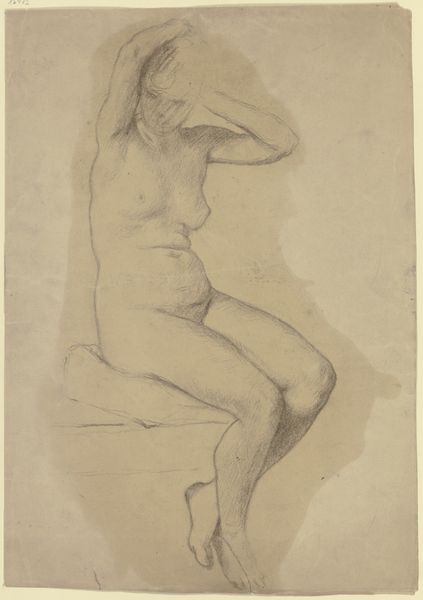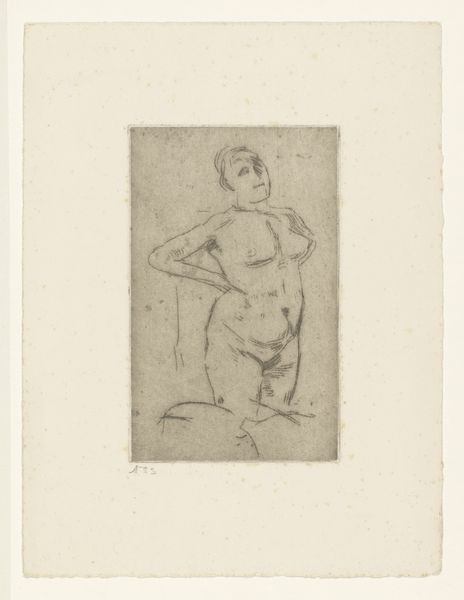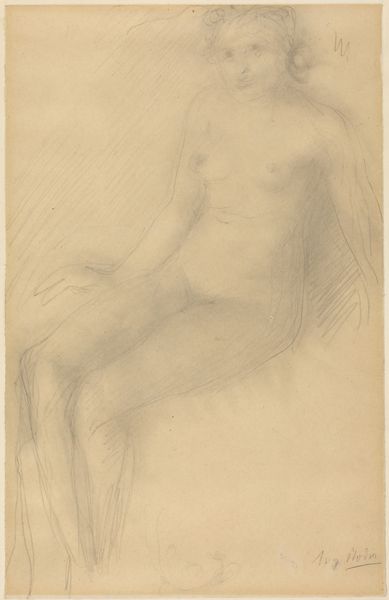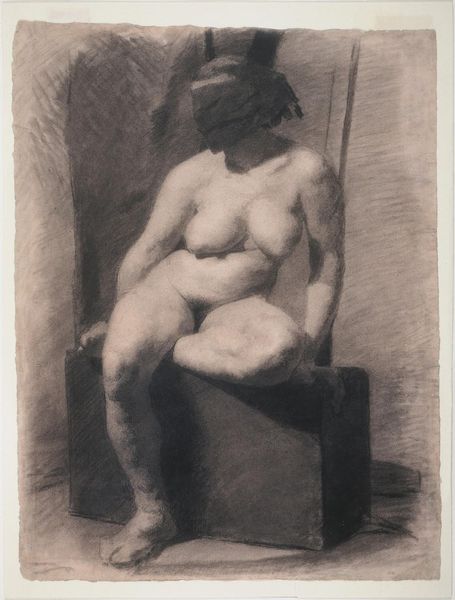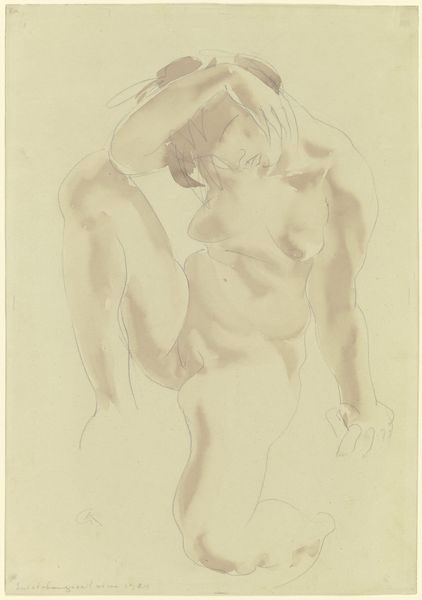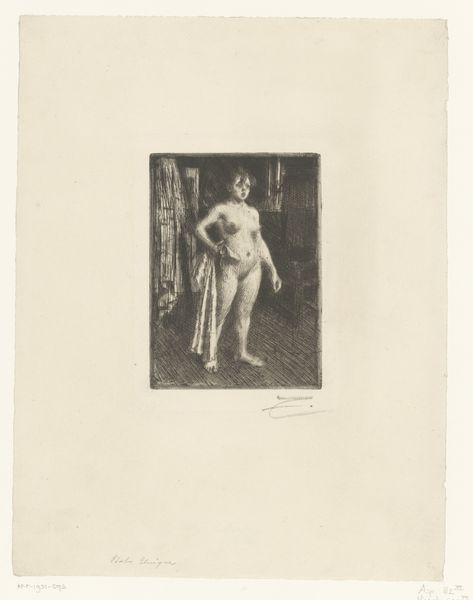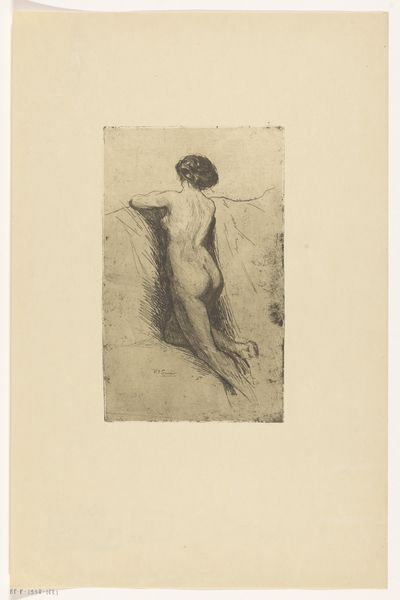
drawing, charcoal
#
portrait
#
drawing
#
charcoal drawing
#
charcoal
#
academic-art
#
nude
#
realism
Dimensions: height 345 mm, width 250 mm
Copyright: Rijks Museum: Open Domain
Curator: Isn't this "Seated Female Nude" by Pieter de Josselin de Jong dreamy? It was made sometime between 1871 and 1906, with charcoal no less. Editor: The pose is very vulnerable, wouldn't you say? There’s something quite affecting about how the figure turns inward. The dark, smudged charcoal around her suggests both a womb-like space, or a sense of brooding perhaps. Curator: Oh, "vulnerable" is a good word for it. There's an honesty that really grabs you. And charcoal—it’s so immediate, isn't it? Feels like you're right there in the studio. Editor: I agree. The use of charcoal connects it to a history of representing the body within shifting power dynamics and gendered viewing conventions. How can we look at the nude today without reckoning with its past, the artist's gaze? Curator: I can see what you are driving at. For me though, there's a timeless quality to it. It’s more about the artist capturing a mood, a fleeting moment. Her expression isn't overtly sexual; it is an ordinary, self-absorbed contemplation of daily experience, wouldn’t you say? Editor: Self-absorbed is definitely a reading one could take. Although, historically women were often depicted passively, denied full agency within artistic narratives. That contextual awareness helps in interpreting the subtleties here. It allows us to address historical representation norms, right? Curator: Hmm, yes, but is there a real struggle against established, dominant discourses in her posture though? I’m getting an odd vibe, or feeling a slightly anxious one, from her sitting like that...it does not mean she must struggle with existing conditions, of course. I appreciate the realness to the art piece rather than only seeing a political debate about an "oppressed model". The focus might be about individual agency and feelings, no? Editor: And it could be all those things at once. A feeling isn’t divorced from social conditions; indeed, the psychological state of an individual is often a direct response to oppressive structures and expectations. Curator: A brilliant way to look at it, very convincing I should add. It is more beautiful, deep, and meaningful that way. Editor: Absolutely, together we discover the beauty in many layers.
Comments
No comments
Be the first to comment and join the conversation on the ultimate creative platform.
